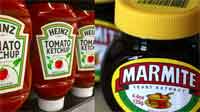| |
|
| |
|
 |
Supply
Chain by the Numbers |
| |
|
| |
- Feb. 23, 2017 -
|
| |
|
| |
|
| |
|
| |
Major Deal in CPG Sector Collapses, but Industry Change far from Over; E2open is Supply Chain Software Company on the Move; Amazon Sales versus Stock Price Growth; Rail Carriers Remain Highly Profitable |
| |
|
| |
| |
| |
$140 Billion |
 |
|
|
| |
| |
|
817%
|
|
That amazingly is the rate of revenue growth at Amazon.com over the last 10 years. Sales were $14.8 billion in 2007, and $136 billion in 2016. Even more impressive, most of that growth was organic, meaning Amazon has made relatively few acquisitions, though certainly some significant portion of that revenue gains came from increases in sales in its Marketplace offering, where other companies sell products on the Amazon platform, its third party logistics services, and web services IT offerings. It's not all come from merchandise sales. But over that time period, Amazon's stock price increased by over 2,000%, from $38 to $845. The point: Amazon's stock price growth cannot exceed revenue growth forever, says David Zanoni this week on the SeekingAlpha blog. He notes Amazon's trailing 12-month price-to-earnings multiple was below 100 at about 86 in 2007, while the current trailing P/E multiple is 172. However, the forward P/E is a less lofty 68. Still, the sales growth must eventually slow, the stock price must come back to earth in terms of the multiple - and when that happens, will Amazon be pressured into giving away less shipping to shore up the bottom line?
|
| |
| |
|
| |
| |
22.1% |
|
That was the level of net profit margins - net income as a percent of revenue - rail carrier Union Pacific achieved in Q4, according to its recent earnings release, making it one of its highest levels of profitability ever. But its wasn't just Union Pacific that had strong profit margins in what was a weak quarter for rail volumes - and also weakness in rates to shippers. That's how to run a railroad. Union Pacific said "core pricing" was up just 1% in the quarter, as that metric continued its multi-quarter fall. Kansas City Southern did almost as well as UP, with net profit margins of 21.8%, followed by Norfolk Southern at 16.7%, and CSX at 15.1%. Compare those numbers to an average of just 6.4% net profits for the group of truckload carriers we follow, 4.0% profit margins at GM and 10% at consumer products giant Unilever in Q4. Significant gains in productivity are the key behind these high levels of profitability. It was many years ago railroads were among the least profitable industries - not any more. |
| |
| |
|
|
|
| |
 |
 |
| |
|
|
| |